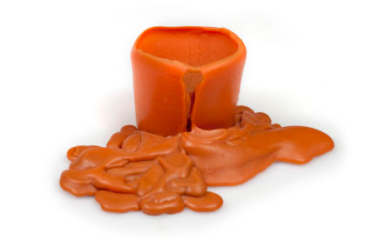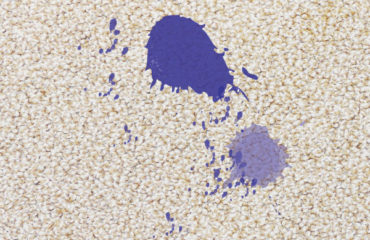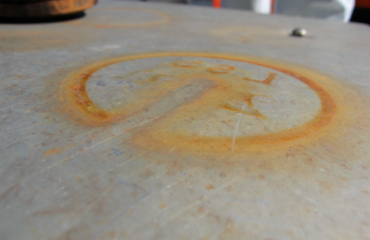 “Professional cleaning causes my carpet to get dirty faster.”
“Professional cleaning causes my carpet to get dirty faster.”
Where did this homeowner misconception come from? I have heard this statement numerous times from consumers who had used reputable carpet cleaning companies.
Each time I requested clarification, I received a similar story. “When I purchased the carpet, it was able to go two years before needing to be cleaned. Once cleaned, the carpet looked dirty within one year instead of two years.”
The customer drew a seemingly logical conclusion: The professional cleaner was causing the premature need for cleaning.
Unfortunately, these homeowners came to the wrong conclusion because they were missing a key piece of information: New carpet is treated with manufacturer-applied, soil-resistant carpet protector, which enables the carpet to go much longer between cleanings. After two years, the protector in the daily use areas has significantly worn off. These areas then perform as if they have not been treated with protector, accumulating soil much faster.
The professional cleaning company did not cause the problem, but they could have prevented it. If the cleaner had instead restored the protector, the carpet would have gone much longer before the apparent (visual) need for cleaning.
Soil-resistant protector keeps the carpet looking cleaner between professional cleanings. Mills apply it to their carpet to enhance the consumer vacuuming and spot cleaning processes.
Unfortunately, protector is a coating that is applied to flexible fibers. Over time, as the carpet fibers are flexed when walked upon, the manufacturer-applied protector wears off.
The good news is that professional cleaners are able to reapply this protector and significantly restore soil resistance to the fibers.
Cleaner doubt in carpet protector
Cleaning professionals also carry a great deal of misunderstanding and doubt as to whether restoring protector is really worthwhile. I have often been told by cleaners that they tested it and found it does not work.
When asked to clarify, they describe their testing procedure as something like this: They went to a retail store to obtain a carpet sample and applied protector to one half of the piece. After abusing the carpet sample as a walk-off mat for a year, they found no noticeable difference between the treated and untreated sides. They reasonably conclude that adding protector makes no difference.
I do appreciate these cleaners’ desire to confirm the effectiveness of a product they might sell to their customers. Unfortunately, there is a flaw in their testing procedure.
The carpet sample they used had been mill-treated with carpet protector. What the test proved was that applying protector to already-protected carpet does not improve the performance. If they had used a cleaned but well-used sample of carpet on which the protector had worn off, they would have seen a dramatic difference.
Customer satisfaction
Consumers desire to have their carpet restored to a “like-new” condition. A cleaner who does not properly restore the carpet protector will not fulfill customer expectations.
Professional cleaners are responsible for understanding why protector was originally applied to carpet and why it should be restored.
Confusing stain resistance with soil resistance
The advent of stain master products that introduced acid-dye blockers to their products, has generated confusion about the difference between stain-resistance and soil resistance.
Stain-resistance is created when the mills add acid-dye blockers to help protect nylon carpet from being stained by products containing food coloring. This stain-resistant protection essentially fills in the unused microscopic dye-sites on carpet fibers. The result is the dye in accidentally spilled products now has nowhere to attach to the carpet fibers, thus the carpet has become stain-resistant. This is not a coating on the fiber. This resistance does not wear off from normal foot traffic. It can be removed by improper cleaning products, though. As long as the carpet is cleaned properly, the manufacturers do not feel that this resistance will have any significant loss due to normal use.
On the other hand, soil-resistance products such as DryMaster Carpet Shield are a type of coating that can be worn off carpet due to normal foot traffic. These products are designed to enhance the resistance of dry soil, water and oil. Even carpet fibers that are difficult to stain, such as olefin and polyester, benefit from the additional protection than can be provided by these soil-resistant products.
Consumer value
As was demonstrated by the carpet cleaner’s test mentioned previously, applying protector to already-protected fiber does not increase its performance. It is, therefore, not a good consumer value to apply protector to rarely used carpet on an annual basis. It is a good value to restore protector annually to daily-use areas.
A professional needs to work with the consumer to determine where and when the protector should be restored.
Protector powerfully enhances carpet performance. This is why manufacturers apply it to new carpet.
For the same reason, professional cleaners should be promoting appropriate reapplication at the time of cleaning. If your goal is to restore the carpet to a “like-new” condition, you can make that happen only by properly reapplying the protector.



